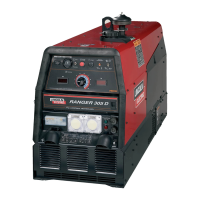
Do you have a question about the Lincoln Electric RANGER 305D SVM175-A and is the answer not in the manual?
| Max Output | 305 A |
|---|---|
| Fuel Type | Gasoline |
| Phase | Single Phase |
| Frequency | 60 Hz |
| Type | Engine Driven Welder |
| Open Circuit Voltage | 80V |
| Auxiliary Power | 120/240V |
| Welding Processes | Stick, TIG, MIG |
| Voltage | 120/240V |
Emphasizes personal responsibility for safe installation and operation.
State-mandated warnings regarding potential health risks from engine exhaust constituents.
Essential safety guidelines for operating and maintaining the engine powered equipment.
Information on potential hazards from EMF fields and recommended safety procedures.
Precautions to prevent electrocution from contact with electrically live parts.
Guidelines for avoiding health risks from welding fumes and gases.
Recommendations for protecting eyes and skin from arc radiation.
Precautions to prevent fires and explosions caused by welding sparks.
Safety measures for handling compressed gas cylinders to prevent explosions.
Detailed specifications for the Ranger 305D, including engine, output, dimensions, and sound levels.
Critical safety instructions to follow before and during equipment installation.
Essential checks and services before starting the engine for the first time.
Guidelines for properly grounding the welder frame for safety.
Read and understand this entire section before operating the Ranger 305D.
Key safety warnings and precautions for operating the welding equipment.
Description of engine stop/start, idler, and welder controls located on the front panel.
Detailed explanation of engine controls like run/stop switch, start button, and glow plug.
Instructions and warnings for running the engine, including speed limits and fueling.
Step-by-step guide for starting the engine, including glow plug and starter operation.
Information on using DC stick electrodes with the Ranger 305D.
Essential safety guidelines to follow before performing any maintenance tasks.
Schedule and guidelines for regular maintenance tasks.
Details on servicing the engine, including filter and fluid checks.
How IGBTs and PWM control weld output based on operator inputs and feedback.
Step-by-step instructions for diagnosing and locating machine malfunctions.
Guidelines for diagnosing and replacing PC boards, including static precautions.
A guide to identifying problems, possible causes, and recommended actions.
Troubleshooting steps for issues related to welding or auxiliary power output.
Troubleshooting for issues affecting the welding arc quality and consistency.
Diagnosing and resolving issues related to engine starting, idling, and shutdown.
Procedure to check and adjust engine RPM for optimal performance.
Verifies if the weld control PC board receives accurate current and voltage feedback.
Guidelines for retesting the machine after mechanical or electrical component repairs.
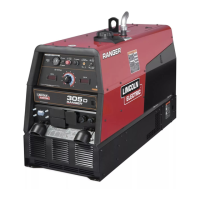
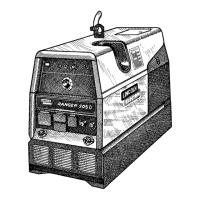
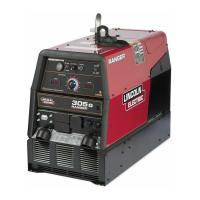
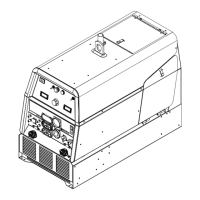
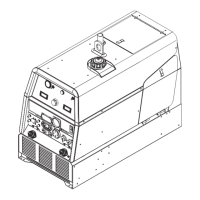
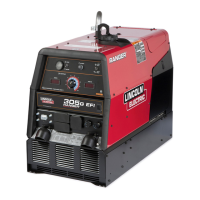
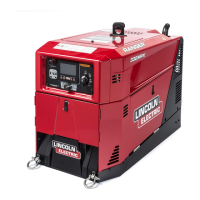
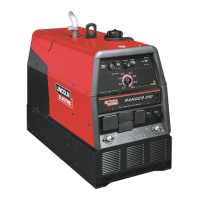
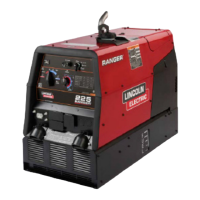
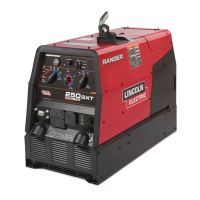
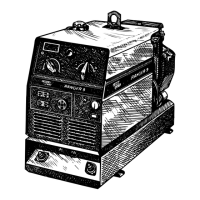

